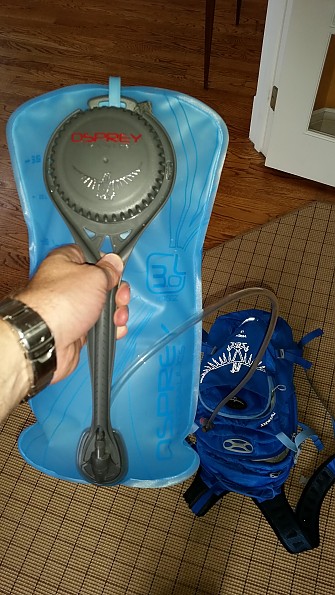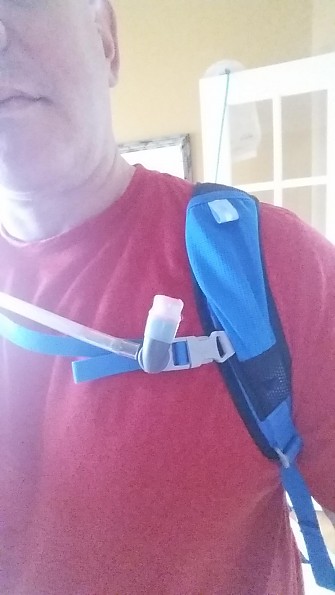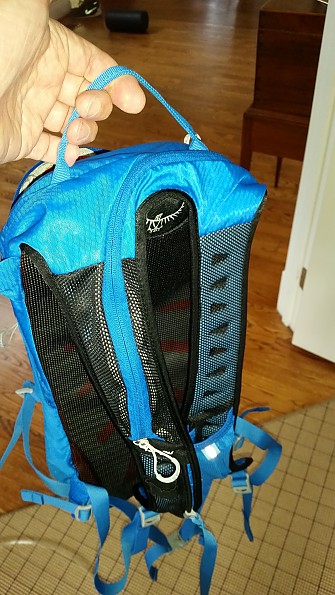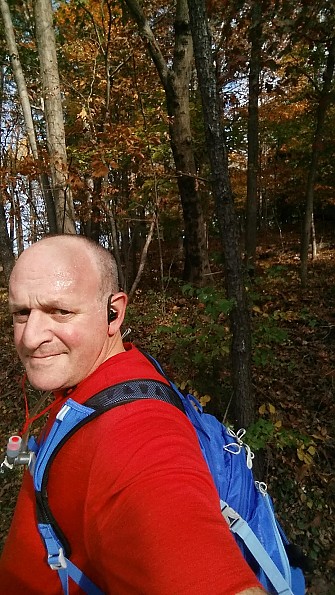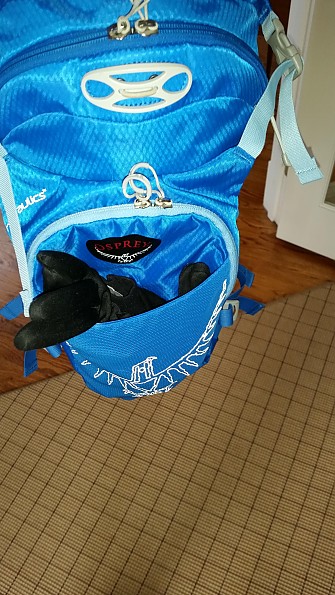Osprey Viper 13
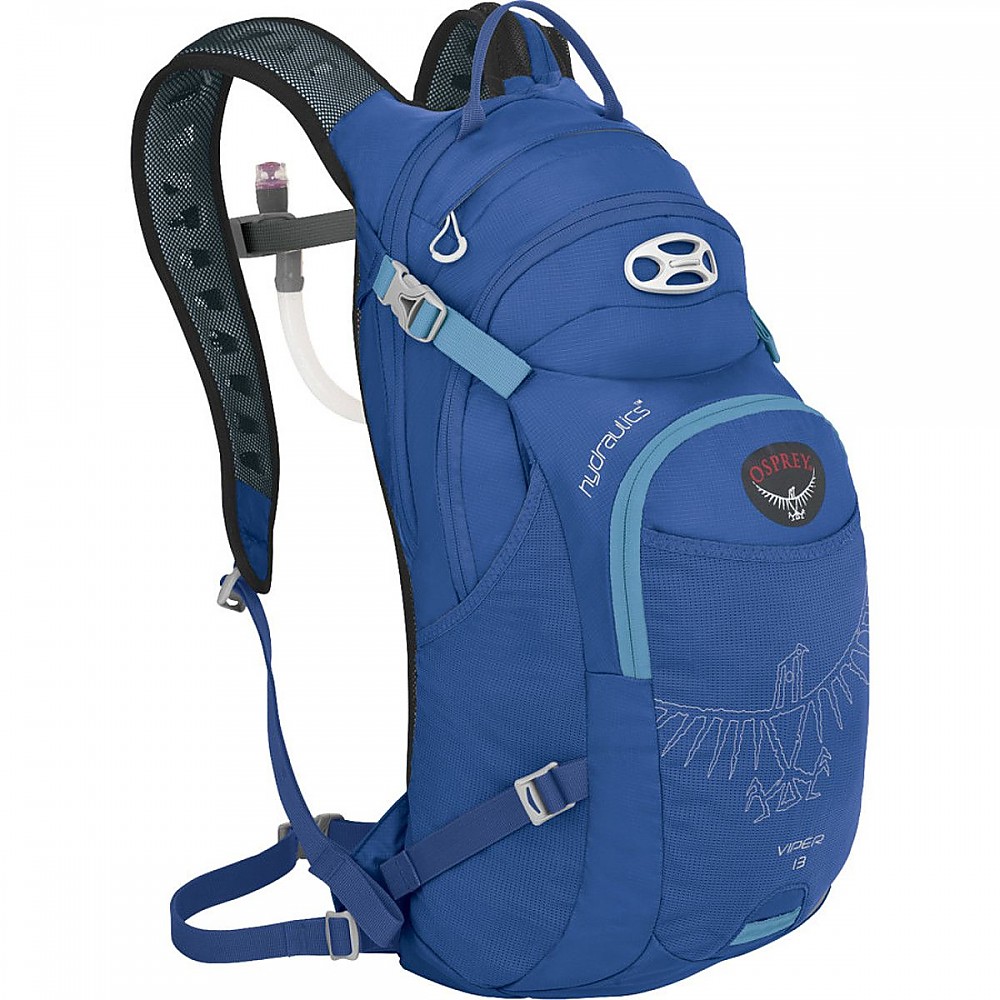
This is a hydration backpack that offers a little space for extra stuff and does its job extremely well. With its included proprietary 3 liter water carrier, the pack is a very comfortable and highly usable way to bring water on your daily excursions. I particularly like the way bladder integrates with the pack. The array of pockets and openings is a little daunting initially.
Pros
- Lightweight
- Comes with 3 liter reservoir and tube
- Lots of pockets
- Comfortable
- Deals with hot-day hiking well
- Good additional storage space for a small sized pack
- Inventive use of bladder to substitute as a light frame
Cons
- A little pricy
- Had trouble configuring the sternum strap
- Some might consider it heavy for a small hydration pack
Introduction:
The Osprey Viper 13 was my choice for a small hydration backpack for day hiking and occasional longer cycling rides. After a summer using the backpack, I'm very happy with it.
Basic Details:
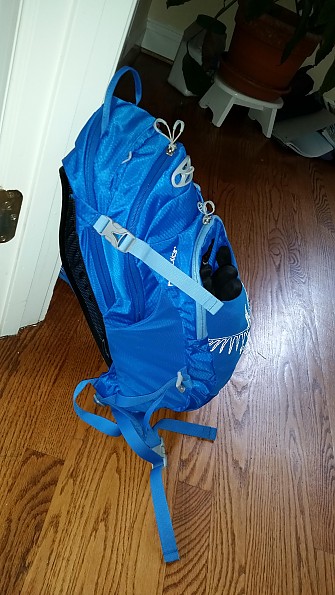
At 1 pound 4 ounces, this is on the heavy size for a small, lightweight backpack primarily intended to carry water plus a few extras. In particular, the 3 liter Osprey bladder adds quite a bit to that weight.
On the other hand, the bladder's heavyweight design complements the pack well, and carrying anything this small doesn't generally trouble me, and for a small backpack, it is very comfortable to carry with a full bladder, snacks, a few layers, hat, gloves, camera and so on.
How it carries the water:
A fairly important topic, considering that this is first and foremost a hydration backpack. It really shines in this area.
The bladder deserves some mention for its relatively unusual design. It is a fair bit heavier than most. As you can see, it has a nice, wide twist opening that makes it pretty easy to fill. Also, it has a hard plastic handle and a long, clear hose with a bit valve at the end.
What isn't shown here is that the back of the bladder is harder plastic, relatively rigid, and that there is a baffle down the middle of the inside of the bag. The baffle helps keep water from sloshing around. The handle i'm holding, along with the rigid back of the bag, provides structure for the backpack, serving as a light internal frame. And it really works.
Another part of the bladder worth mentioning is the bite valve. You can't see it well here, but the valve has a small but tenacious magnet that attaches to the sternum strap clip. I say tenacious because the magnet is not easy to dislodge. This surprised me. (The magnet has a funny habit of attaching itself to my car doors, though!).
It's a great solution and, unless you are obsessed about counting ounces, a very nice, usable water bladder. I will note that the pack can accommodate 3 liter Platypus bladders too.
The way the bladder fits into the pack is very easy and very good. Note the zipper that runs along the right shoulder strap above. To put the bladder into the pack, you unzip all the way, drop the bladder in the resulting opening so it sits next to your back, then zip up, which encloses quite a bit of the hose.
As a result, the bladder fits neatly into a confined space so it can't jostle around, and the hose stays put. It's a great design. You can drop another bladder in there too, and I have used a Platypus a number of times with this backpack. The difference is that you can occasionally tell the the back is slightly less rigid if you aren't using the Osprey bladder.
How it carries:
Setting aside the hydration part, this backpack is flat-out comfortable, even stuffed full. As you can see, it rides relatively low on your back. However, it's so small that the bottom is still around your lower back. The shoulder straps are made from nylon, mesh, and foam that is perforated so moisture gets out, and they are wide enough to do a nice job distributing the weight. The thin foam back pad is essentially the same—thin foam, perforated in various places. I wouldn't carry more than 15 pounds in this, but it handles that very easily and comfortably.
This shows the bladder in, hose zipped into the right shoulder strap and through the elastic loop just below. Also, you can see the perforated shoulder straps, as well as the thin waist strap with clip to keep the backpack close dangling below. Nice if you're rock-hopping or cycling. Also, it has a solid haul loop at the top for a pack this lightweight.
One minor caveat, the sternum strap is kind of short. For a wider person, it's barely long enough. The sternum strap attachment points helpfully slide up and down to adjust in that direction, like many backpacks these days.
Pockets/storage:
This is a fairly busy backpack in terms of pockets. Two stretchy side pockets, kind of visible from the photos above. Fine for a portable camera, gps, smart phone, or a couple of energy bars or small snacks. A small zippered pocket adjacent to the 'hose zip' that has a soft inside —good for something you don't want to scratch like a smart phone, gps, compass, or a wallet, a small pocket.
Next to that, the pack unzips and opens up to the large interior pocket — you can stuff a light fleece or down jacket or vest in there, a spare shirt. I think that is where the majority of the claimed 800 cubic inches of storage is.
Note, that white plastic thingy is designed to be inserted between the openings in a cycling helmet to facilitate carrying the helmet. I haven't tried using it yet.
Next, there is another zippered pocket with a panel organizer sewn in. This has some more room than the other smaller pockets. I like dropping my keys and a small knife into that mesh interior panel so they don't scratch or catch on other things. Good place for a spare t-shirt, lunch, wallet—a decent-sized small pocket.
Finally, there is a stretchy mesh pocket on the back and a typical larger than expected outside stash pocket, secured by two straps/clips. Large enough to hold a low-volume rain or wind shell rolled up. You can see where I have a beanie and a light pair of gloves sticking out of the mesh outer pocket below.
The pockets are easy to access. The small upper pocket has one zipper pull, the larger ones have dual zipper pulls. All the pulls have a hard loop at the end, makes them easy to handle and pull open.
I tend to like less pockets than more. My preference is usually a main large storage compartment and maybe a few small pockets for snacks. I have figured out how to put all of these to good use.
Durability
This is made out of lightweight materials—nylon, plenty of mesh that can snag. It wouldn't be my choice for consistent scrambling or rock climbing. After about 4 months of pretty regular use, I have not seen any rips, tears, seams pulling, zipper malfunctions, or anything else. I believe Osprey has a lifetime guarantee if something other than your relentless efforts to hammer the pack results in a failure. :)
How I have used it
Almost exclusively for shorter outings—half days, the couple hours I could get here and there on weekends. Half the time, all I had was the water, snacks, a few other things. Toward the end of the summer and into the fall, I have packed more in.
This past weekend, for example, I had a Patagonia R1 hoody stuffed into the main pocket along with an extra T-shirt, and on another day I had a light rain shell in the outer stash pocket. I'm pretty sure the most I have carried in it, including a full bladder, was about 15 pounds. While you can feel that just a little in your shoulders, this easily carries that much weight without any real impact on my shoulders or back.
Takeaways
There are lots of hydration carrying options out there. It's very much worth checking them out and trying them on to see what feels good and what you like. You can definitely find smaller and lighter options if you really just want water and essentials for a day hike. I like a little more space, though, and Osprey had several options, all slightly different in various ways.
In the store I visited, where I had a $25 loyalty discount to make the price better, Osprey and Camelbak appeared to be the most popular in terms of variety of different options. This review is mostly very positive because it has performed so well—and for $110 retail, $79 with the discount I had, I didn't expect to be quite this happy with it.
Source: bought it new
Price Paid: $110 (less a store loyalty discount)
Your Review
Where to Buy
You May Like
Specs
| Price |
MSRP: $94.00 Historic Range: $59.34-$110.00 Reviewers Paid: $110.00 |
| Weight |
1 lb 7 oz / 640 g |
| Capacity |
800 cu in / 13 L |


